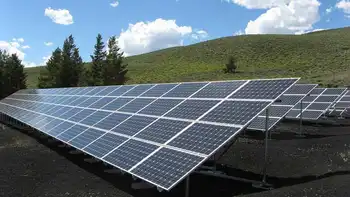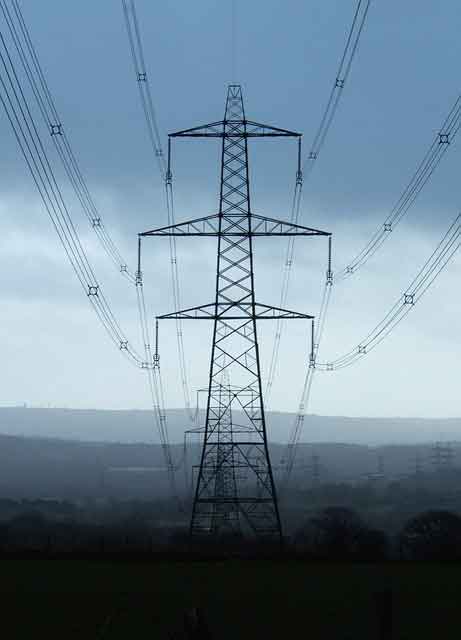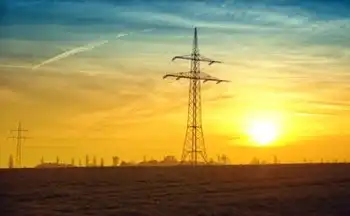Gazans learn to work around power outages
By Associated Press
Electrical Testing & Commissioning of Power Systems
Our customized live online or in‑person group training can be delivered to your staff at your location.

- Live Online
- 12 hours Instructor-led
- Group Training Available
The closure, imposed November 5 to force Gaza's Hamas rulers to halt rocket fire on Israeli border communities, comes after 19 months of sharply restricted access to the territory. The isolation has taken its toll, causing rolling blackouts and shortages of fuel and cooking gas.
Samah Ahmad jokes that she looks like a miner.
The 29-year-old Gaza resident uses her mobile phone as a flashlight, fastening it to her head with a scarf. The light illuminates her embroidery work through the night.
"If I wasn't doing embroidery, I'd be lying awake, doing nothing," said Ahmad.
Ahmad likes African motifs and is working on an orange-and-yellow pattern inspired by the Ghanian flag. She charges her phone when the electricity is on, giving her about four hours worth of light.
Her only complaint? "Sometimes I fix the phone so tightly it hurts," Ahmad says.
Khalil Abu Shamaleh, 38, can be seen most nights huddled in Gaza cafes that offer wireless Internet.
Shamaleh, who belongs to Gaza's small minority of laptop carriers, is used to going online from his apartment. But Gaza's blackouts often cut his connection, and when Gaza goes dark he sets up in generator-powered cafes.
Electricity is distributed in a rotating system around sections of the city, and Abu Shamaleh has memorized the schedule.
One recent evening in a Gaza cafe, Abu Shamaleh stood up at his corner table, paid his bill and packed up his laptop.
He knew it was his neighborhood's turn to get electricity.
"Power's back on," he said, smiling. "I'm going home."
Every dawn, 37-year-old Ferial Kheisi and her mother-in-law head to a backyard hut where they keep an ancient wood-burning oven. They bake hundreds of pita loaves for their large clan east of Gaza City.
Kheisi's routine hasn't changed since she married at age 14. She's expert enough to breast-feed her toddler son while tossing in loaves.
Since blackouts immobilized Kheisi's electric oven, she's begun using her wood stove for more than baking bread. Now she takes advantage of the heat and the flames shooting through the stove's roof to cook pots of food — usually beans and rice.
The power cuts have left Kheisi tied to wood fires all day. There's tea to boil for the men and for guests, food to cook before her children come home from school, and then more tea after lunch.
"Everything tastes better cooked over a wood fire," Kheisi said through the smoke.
Customers crowd around the shack of old-fashioned tinkerer Mohammed Abu Seif to repair the stoves their grandparents once used.
The blackouts and a severe shortage of cooking gas have put most ovens out of commission. But these copper stoves, dug out of basements and storage rooms, can work on diesel fuel, with a little salt added to diminish the smell. Diesel remains widely available, smuggled into Gaza through tunnels that crisscross the territory's border with Egypt.
Umm Mohammed, a 50-year-old housewife, waited at the shop to repair her ancient stove.
She remembered her family using the stove to heat bath water when she was a girl. Her family had kept it in storage since electricity arrived decades ago.
"It's noisy, it goes wee, wee and scares the kids," she said. "We wanted to forget these stoves."
On the counter of electrician Khalil Azzam's shop lie the most recent casualties of Gaza's power cuts: three cordless telephones, two electric teapots, a rice cooker, a fax machine, three blenders and an iron. There are more in the back, he said.
A steady steam of customers flowed in on a recent afternoon: A woman in a flowery blue headscarf brought in a fried hairdryer. A man in a suit brought in an electric teapot, a desk lamp and a pair of computer speakers. Aisha Hasan, a high school teacher, came to collect the tape deck she uses to listen to news, religious music and "anything that's not forbidden by Islam," like love songs, she said.
All met their end in the same way.
"When the electricity goes out then comes back on, there's a surge and it can burn out everything," said Azzam, 35.











